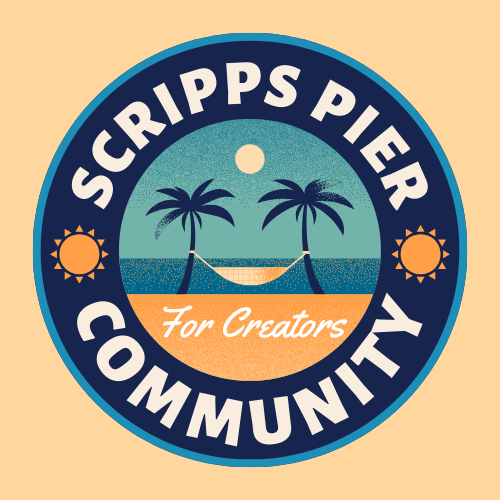In the digital age, content creators have a plethora of opportunities to monetize their audience. One such method is by creating a paid community. This blog post will guide you through the process, providing expert-level information and actionable steps to help you boost your income.

Table of Contents
- Defining a Paid Community
- Benefits of a Paid Community
- Steps to Create a Paid Community
- Maintaining a Healthy Community
- Monetizing Strategies
- Challenges and Solutions
- Alternatives to Paid Communities
- Case Study: Successful Paid Communities
- The Power of Partnership
- Final Thoughts
Defining a Paid Community
A paid community is a digital platform where content creators can engage with their audience on a deeper level. Members pay a subscription fee to access exclusive content, interact with the creator, and connect with like-minded individuals. This model allows creators to monetize their audience while providing value to their members.
Paid communities can take various forms, including forums, social media groups, or membership sites. The key is to provide content that is worth the membership fee. This could be in-depth tutorials, exclusive videos, live Q&A sessions, or access to a supportive community.
Creating a paid community requires careful planning and execution. It’s not just about setting up a platform and charging a fee. You need to understand your audience, create valuable content, and foster a respectful community. This is whereScripps Pier Consultingcan help.
Benefits of a Paid Community
Creating a paid community has several benefits for content creators. Firstly, it provides a steady stream of income. Unlike ad revenue or sponsorships, which can fluctuate, subscription fees provide a predictable income. This financial stability allows creators to focus on producing quality content.
Secondly, a paid community allows creators to connect with their most dedicated fans. These are the people who value your content enough to pay for it. They are more likely to engage with your content, provide valuable feedback, and become brand advocates.
Lastly, a paid community can enhance your brand. By providing exclusive content and a supportive community, you can position yourself as an expert in your field. This can attract more followers, leading to more opportunities for monetization.
Steps to Create a Paid Community
Creating a paid community involves several steps. Firstly, you need to understand your audience. What are their needs and interests? What kind of content would they be willing to pay for? Conduct surveys or interviews to gather this information.
Next, choose a platform for your community. This could be a social media platform, a forum, or a membership site. Consider the features you need, such as the ability to post content, host live sessions, or facilitate discussions.
Once you have a platform, create your content. Remember, it needs to be worth the membership fee. This could involve creating in-depth tutorials, hosting live Q&A sessions, or facilitating discussions. Be sure to regularly update your content to keep members engaged.
Maintaining a Healthy Community
Maintaining a healthy community is crucial for the success of your paid community. This involves moderating discussions, addressing member concerns, and fostering a respectful environment. It’s important to set clear community guidelines and enforce them consistently.
Engaging with your community is also important. Respond to comments, participate in discussions, and show appreciation for your members. This can foster a sense of community and encourage members to stay.
Lastly, always be upfront with your members. If there are changes to the community or the subscription fee, communicate this clearly and in advance. Transparency builds trust and can help retain members.
Monetizing Strategies
There are several strategies to monetize your paid community. The most straightforward is to charge a subscription fee. This could be a monthly or annual fee, depending on your content and audience.
You could also offer tiered memberships. For example, a basic membership could provide access to the community and regular content, while a premium membership could offer additional benefits like one-on-one consultations or exclusive content.
Another strategy is to partner with brands for sponsorships or affiliate marketing. This can provide additional revenue, but be sure to only partner with brands that align with your community’s values and interests.
Challenges and Solutions
Creating and managing a paid community comes with its challenges. One common challenge is attracting and retaining members. To overcome this, focus on providing value. Regularly update your content, engage with your community, and be responsive to their needs and feedback.
Another challenge is managing the community. This involves moderating discussions, addressing member concerns, and enforcing community guidelines. If this becomes too time-consuming, consider hiring a community manager or partnering with a company like Scripps Pier Consulting.
Lastly, setting the right subscription fee can be tricky. You want to price it high enough to generate revenue, but not so high that it deters potential members. Research what similar communities are charging and consider your audience’s willingness to pay.
Alternatives to Paid Communities
While paid communities offer many benefits, they are not the only way to monetize your audience. Other methods include selling products or services, offering online courses, or using advertising or sponsorships. Consider your audience, content, and goals to determine the best monetization strategy for you.
For example, if you have a large audience but a small percentage are willing to pay, advertising or sponsorships might be more effective. If you have a smaller, highly engaged audience, a paid community or online course might be more profitable.
Remember, you can use multiple monetization strategies. For example, you could have a free community with advertising and a paid community for your most dedicated fans.
Case Study: Successful Paid Communities
There are many examples of successful paid communities. One example is Patreon, a platform that allows creators to offer subscription-based content. Creators can offer different tiers of membership, each with its own benefits. This model has allowed many creators to earn a sustainable income from their audience.
Another example is MasterClass, a platform that offers online classes taught by experts in various fields. Members pay a subscription fee to access the classes. This model has been successful due to the high-quality content and the reputation of the instructors.
These examples show that with the right strategy and execution, a paid community can be a profitable way to monetize your audience.
The Power of Partnership
Creating and managing a paid community can be a daunting task. That’s where a partnership can help. Companies like Scripps Pier Consulting can handle the technical and administrative aspects, allowing you to focus on creating content and engaging with your community.
A partnership can also provide expertise and resources that you might not have. For example, Scripps Pier Consulting has a team of experts who can help with community management, content creation, and monetization strategies.
By partnering with a company like Scripps Pier Consulting, you can leverage their expertise and resources to create a successful paid community. This can help you monetize your audience and boost your income, while still allowing you to focus on what you do best: creating content.
Final Thoughts
Creating a paid community is a viable way to monetize your audience and boost your income. It allows you to connect with your most dedicated fans, enhance your brand, and provide value to your members. However, it requires careful planning, execution, and maintenance.
Whether you’re a solo creator or part of a larger team, consider partnering with a company like Scripps Pier Consulting. They can provide the expertise and resources you need to create a successful paid community. Remember, the key to a successful paid community is to always create content that is worth the membership fee.
With the right strategy and execution, a paid community can be a profitable way to monetize your audience. So why wait? Start creating your paid community today!
